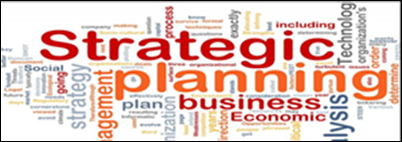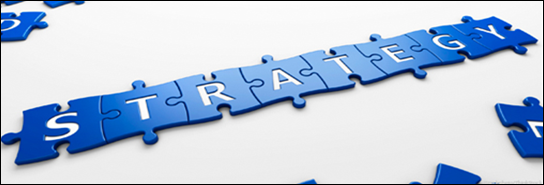

40% of all private businesses do not have an IT Strategy in place. A highly beneficial IT strategy is never erroneously conceived to justify technology for technology's sake - it's about supporting the needs of the business.
Fundamentally, from an IT support viewpoint, the ultimate objective of IT must always be to grow the business carefully optimizing expenditures, while providing value for every dollar spent.
Too often, companies will use technology to automate many of their functions that do not necessarily add value to the company.
One-third of all mid-market companies spend 15% or more of their revenue on digital technology alone. To make the most of of their IT dollars, the company must have a clear vision in order to develop a meaningful IT strategic plan.

An Information Technology (IT) strategic plan is a document that details the technology-enabled business management processes an organization uses to guide and enhance operations. It serves as a guide to IT-related decision making, with IT tasks prioritized and implemented using the plan as a framework.
The plan outlines areas where IT can contribute business value and where an organization can gain competitive advantage by making the best use of technology resources.
The plan should cover from 3 to 5 years with the immediate focus on the next 12-18 months.
The plan is written to expressly support business functions rather than detailed system requirements that are necessary for IT as each phase of the plan is implemented. While the detaild definition of technology requirements is critical down the road, they aren't necessary to explain the company's strategic objectives inherent in the plan.
The IT strategic plan can be company-wide or it can be developed by functional areas such as marketing, sales, human resources. etc. But generally the plan should be all-encompassing for the entire company with reference to the individual functions within the company that desire automation.

Specifically, a company's IT strategy can help the business accomplish the following:
Meet the demands of customers, who increasingly expect information technology to be embedded into even the most traditional product and services.
Streamline or automate business processes including identifying which applications should be customized and where standardized business processes can be leveraged.
Respond to regulatory requirements and the related reporting that companies must build into applications.
Provide additional resilience to existing business processes and to the overall organization, including improving the accessibility and accuracy of systems and processes, while also safely navigating information security threats.
Build adaptability into select systems and processes to handle dynamic market conditions, allowing for a business to respond to and capitalize on unpredictable economic forces.
This is generally a one-page summary targeted at the CEO, CIO and other management executives describing a summary of the task(s) at hand, schedule for delivery and estimated costs.
Defines the high level goals and plans for all areas of information technology that affect the business illustrating the overall strategy. For example, major goals may be reliable and secure systems, technical innovation and cost-effective use of resources.
The solution architecture or IT blueprint includes new applications and enhancements, integration and infrastructure. This current and future state architecture is diagram useful in demonstrating the "Big Picture" consisting of elimination of redundancy, accounting to meet legal and regulatory factors, and providing for definition of key systems.
Identifies new resources including infrastructure, software and personnel that will be required.
Action plans to achieve goals.
Effectiveness measures and methods to assess outcomes/goals achievement.
Schedule to assess goal progress.
Person/group responsible for each functional area.
Performance outcome goals.
Resources (infrastructure, software and personnel) required.
A graphic illustration of the schedule for major functional area development is provided to remind and eventually enable implementation downstream.
Costs are broken down by infrastructure, software and new personnel.
Measurements are put in place to determine metrics when creating the plan instead of waiting for scheduled implementation of each step to determine what measurements are needed to review progress.
The plan in its entirety will be about 15 pages. An optional PowerPoint presentation can also be prepared of generally not more than 25 pages.